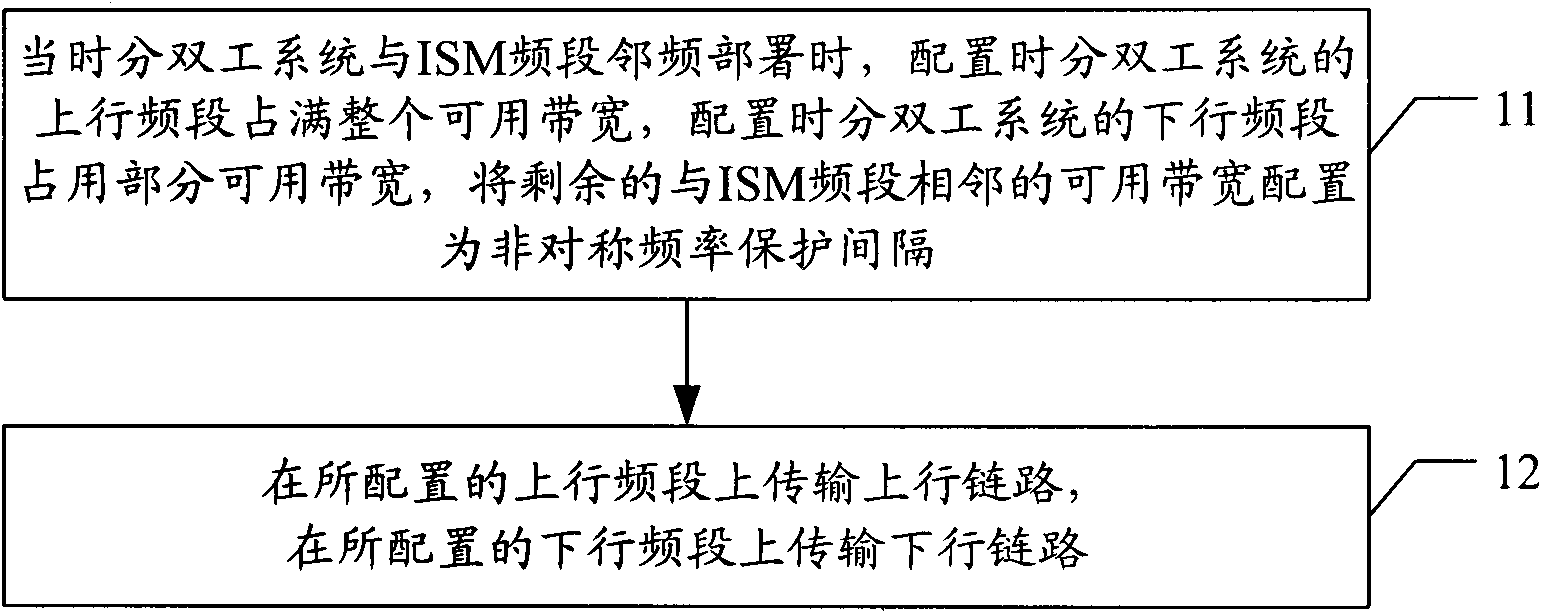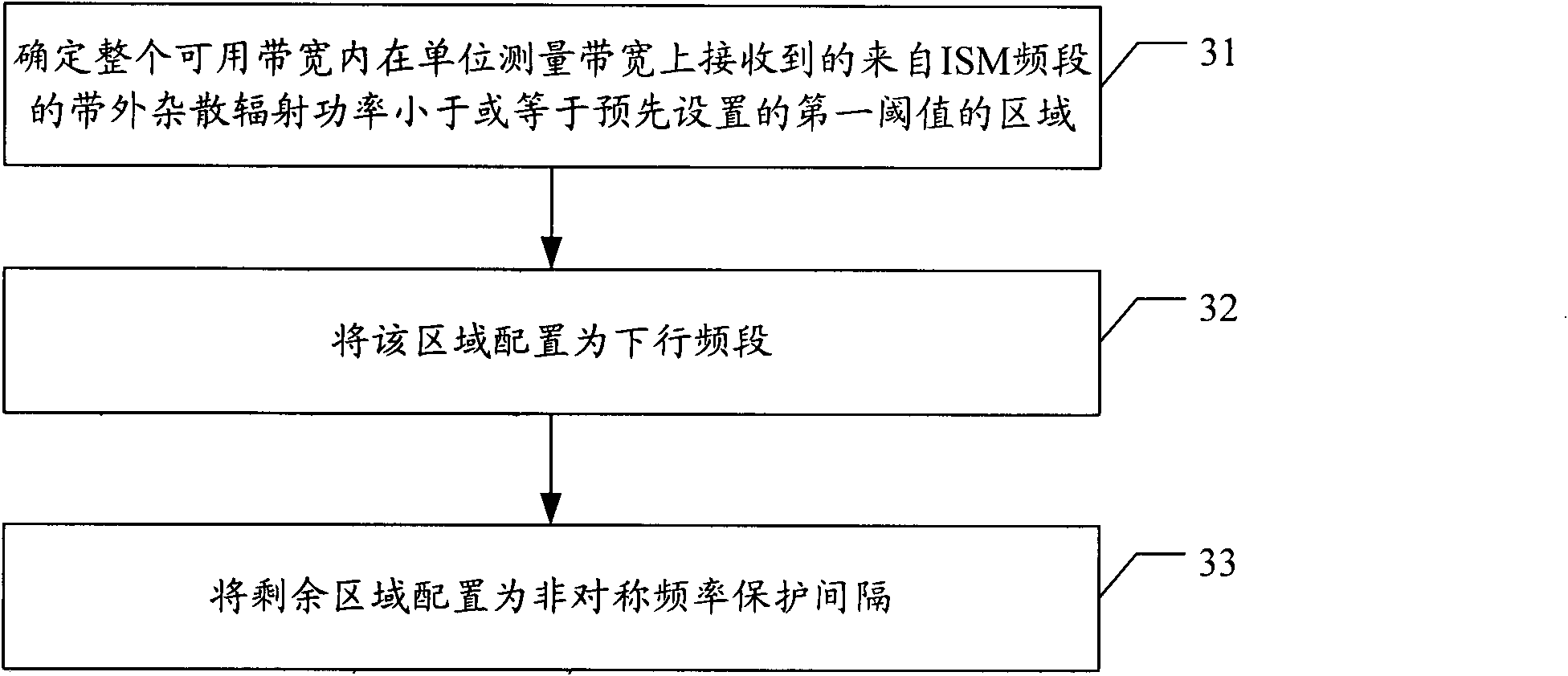Link transmission method and device
A technology of link transmission and area configuration, applied in network traffic/resource management, electrical components, wireless communication, etc., can solve problems such as system performance loss, waste of spectrum resources, inconvenient popularization, etc., to improve system performance and reduce coexistence interference , the effect of improving the utilization rate
- Summary
- Abstract
- Description
- Claims
- Application Information
AI Technical Summary
Problems solved by technology
Method used
Image
Examples
Embodiment Construction
[0024] Aiming at the problems existing in the prior art, the present invention proposes a link transmission scheme, which can reduce coexistence interference and improve the utilization rate of spectrum resources, and is simple and convenient to implement and easy to popularize.
[0025] In order to make the technical solution of the present invention clearer and clearer, the solution of the present invention will be further described in detail below with reference to the accompanying drawings and examples.
[0026] figure 1 It is a flowchart of a method embodiment of the present invention. Such as figure 1 shown, including the following steps:
[0027] Step 11: When the time division duplex system is deployed adjacent to the ISM frequency band, configure the uplink frequency band of the time division duplex system to occupy the entire available bandwidth, configure the downlink frequency band of the time division duplex system to occupy part of the available bandwidth, and ...
PUM
 Login to View More
Login to View More Abstract
Description
Claims
Application Information
 Login to View More
Login to View More - R&D
- Intellectual Property
- Life Sciences
- Materials
- Tech Scout
- Unparalleled Data Quality
- Higher Quality Content
- 60% Fewer Hallucinations
Browse by: Latest US Patents, China's latest patents, Technical Efficacy Thesaurus, Application Domain, Technology Topic, Popular Technical Reports.
© 2025 PatSnap. All rights reserved.Legal|Privacy policy|Modern Slavery Act Transparency Statement|Sitemap|About US| Contact US: help@patsnap.com



